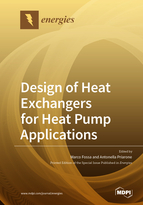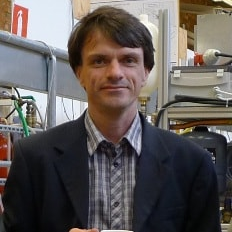Design of Heat Exchangers for Heat Pump Applications
A special issue of Energies (ISSN 1996-1073). This special issue belongs to the section "J: Thermal Management".
Deadline for manuscript submissions: closed (31 May 2020) | Viewed by 24850
Special Issue Editors
Interests: ground source heat pumps; borehole heat exchangers; ground modelling; thermal response test; advanced equipment and sensors for geothermal heat pumps; temperature response factor estimation; ground heat exchanger design and criteria; energy pile heat exchangers
Special Issues, Collections and Topics in MDPI journals
Interests: ground coupled heat pumps; energy in buildings; heat transfer; renewable energy
Special Issues, Collections and Topics in MDPI journals
Special Issue Information
Dear Colleagues,
It is our pleasure to invite you to submit a paper for a Special Issue of Energies on the topic of "Design of Heat Exchangers for Heat Pump Applications".
As is well known, heat pumps (HPs) allow for providing heat without direct combustion, in both civil and industrial applications. They are very efficient systems that, by exploiting electrical energy, greatly reduce local environmental pollution and CO2 global emissions. The fact that electricity is a partially renewable resource and because the coefficient of performance (COP) can be as high as four or more, means that HPs can be nearly carbon neutral for a full sustainable future.
The proper selection of the heat source and the correct design of the heat exchangers is crucial for attaining high HP efficiencies—examples can be ground coupled heat exchangers, lake/sea/waste water systems, enhanced surface heat exchangers, and HPs exploiting waste heat from industrial and civil processes.
Heat exchangers (also in terms of HP control strategies) are hence one of the main elements of HPs, and improving their performance enhances the effectiveness of the whole system. Both the heat transfer and pressure drop have to be taken into account for the correct sizing, especially in the case of mini- and micro-geometries, for which traditional models and correlations can not be applied. New models and measurements are required for best HPs system design, including optimization strategies for energy exploitation, temperature control, and mechanical reliability. A relevant feature is also the phase change of the refrigerant, which can involve problems related to the phase distribution in the heat exchanger.
Moreover, the selection of the proper refrigerant fluid it is important in order to improve the energy performance and to enhance environmental compatibility. Thus, a multidisciplinary approach of the analysis is requested.
Papers submitted for this Special Issue may be research papers (theoretical and experimental), reviews, or analyses of case studies.
Prof. Marco Fossa
Prof. Antonella Priarone
Guest Editors
Manuscript Submission Information
Manuscripts should be submitted online at www.mdpi.com by registering and logging in to this website. Once you are registered, click here to go to the submission form. Manuscripts can be submitted until the deadline. All submissions that pass pre-check are peer-reviewed. Accepted papers will be published continuously in the journal (as soon as accepted) and will be listed together on the special issue website. Research articles, review articles as well as short communications are invited. For planned papers, a title and short abstract (about 100 words) can be sent to the Editorial Office for announcement on this website.
Submitted manuscripts should not have been published previously, nor be under consideration for publication elsewhere (except conference proceedings papers). All manuscripts are thoroughly refereed through a single-blind peer-review process. A guide for authors and other relevant information for submission of manuscripts is available on the Instructions for Authors page. Energies is an international peer-reviewed open access semimonthly journal published by MDPI.
Please visit the Instructions for Authors page before submitting a manuscript. The Article Processing Charge (APC) for publication in this open access journal is 2600 CHF (Swiss Francs). Submitted papers should be well formatted and use good English. Authors may use MDPI's English editing service prior to publication or during author revisions.
Keywords
- heat pumps
- heat exchangers
- condensers and evaporators
- refrigerants
- heat pump control
- renewable energy
- ground source heat pumps
- energy and buildings







